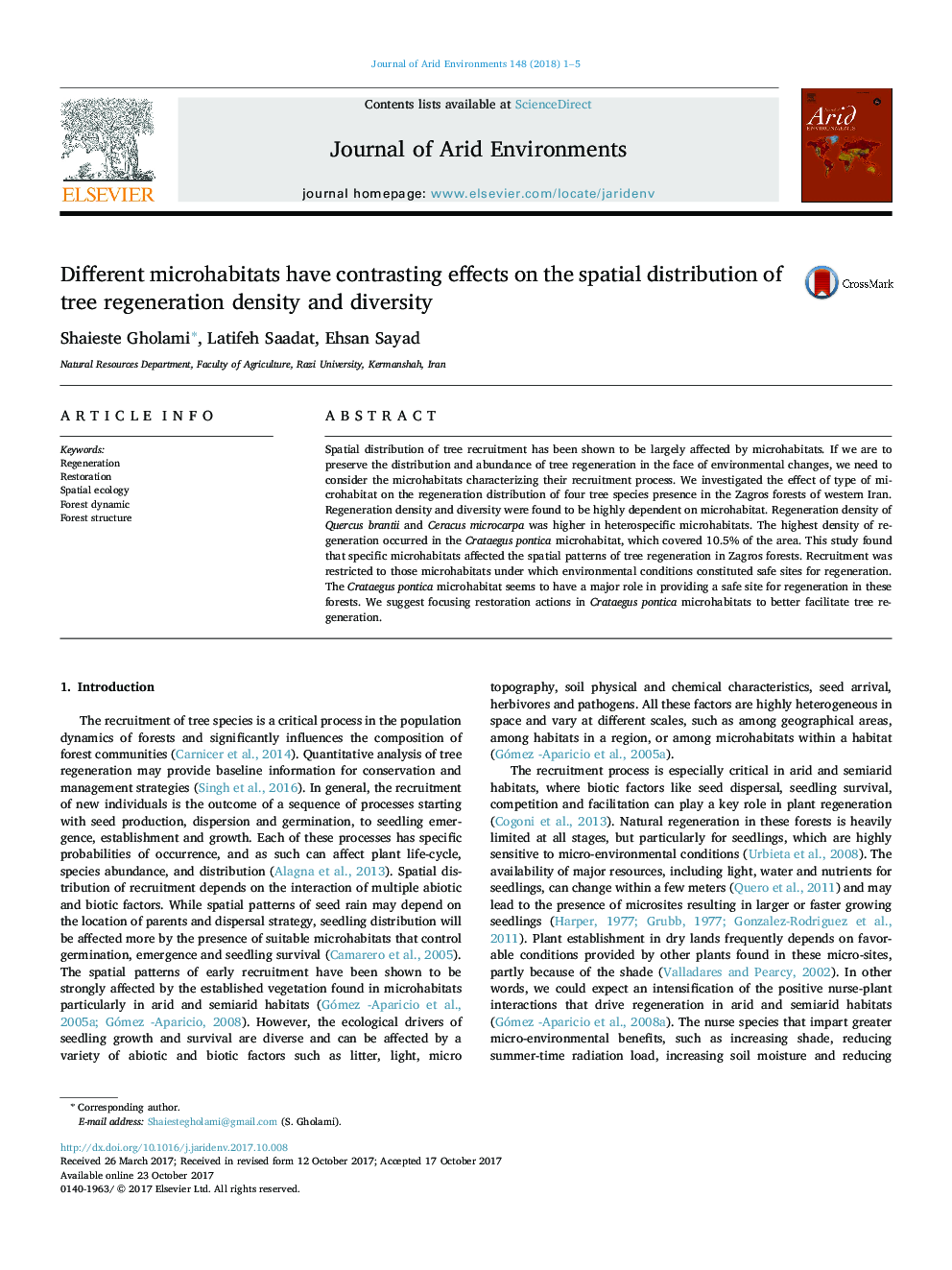| Article ID | Journal | Published Year | Pages | File Type |
|---|---|---|---|---|
| 8848607 | Journal of Arid Environments | 2018 | 5 Pages |
Abstract
Spatial distribution of tree recruitment has been shown to be largely affected by microhabitats. If we are to preserve the distribution and abundance of tree regeneration in the face of environmental changes, we need to consider the microhabitats characterizing their recruitment process. We investigated the effect of type of microhabitat on the regeneration distribution of four tree species presence in the Zagros forests of western Iran. Regeneration density and diversity were found to be highly dependent on microhabitat. Regeneration density of Quercus brantii and Ceracus microcarpa was higher in heterospecific microhabitats. The highest density of regeneration occurred in the Crataegus pontica microhabitat, which covered 10.5% of the area. This study found that specific microhabitats affected the spatial patterns of tree regeneration in Zagros forests. Recruitment was restricted to those microhabitats under which environmental conditions constituted safe sites for regeneration. The Crataegus pontica microhabitat seems to have a major role in providing a safe site for regeneration in these forests. We suggest focusing restoration actions in Crataegus pontica microhabitats to better facilitate tree regeneration.
Related Topics
Physical Sciences and Engineering
Earth and Planetary Sciences
Earth-Surface Processes
Authors
Shaieste Gholami, Latifeh Saadat, Ehsan Sayad,
